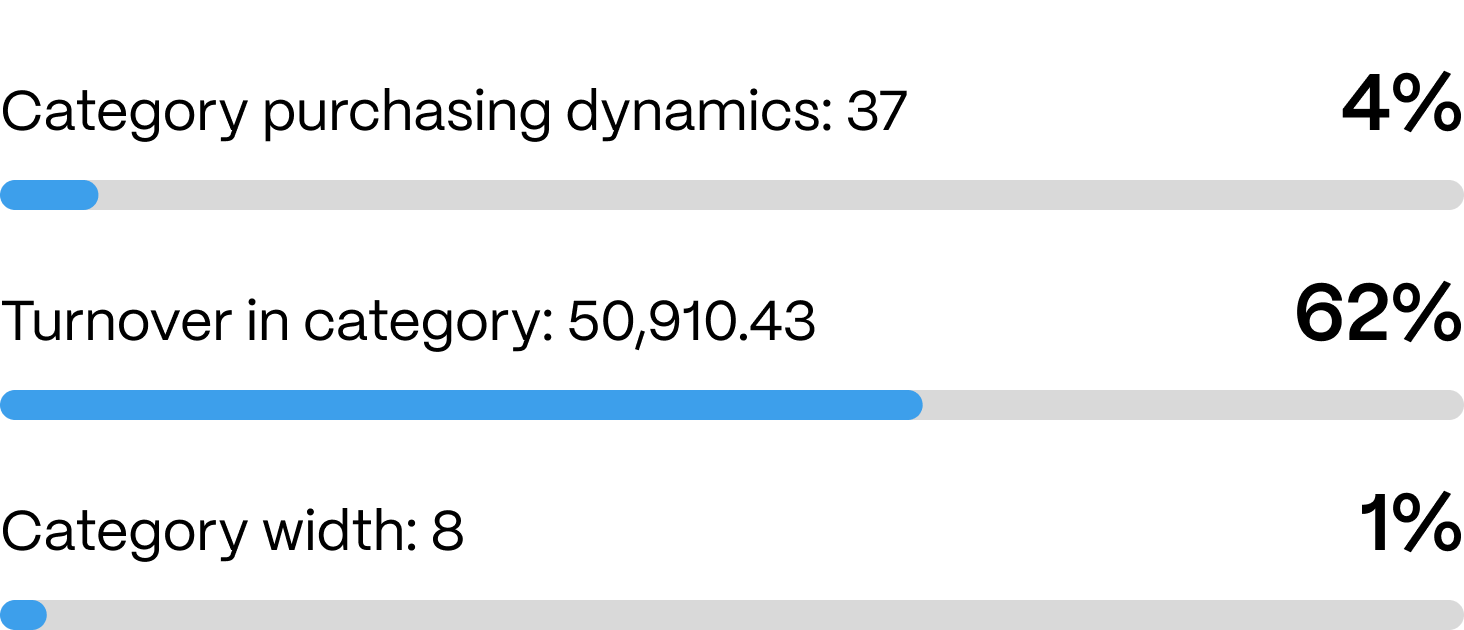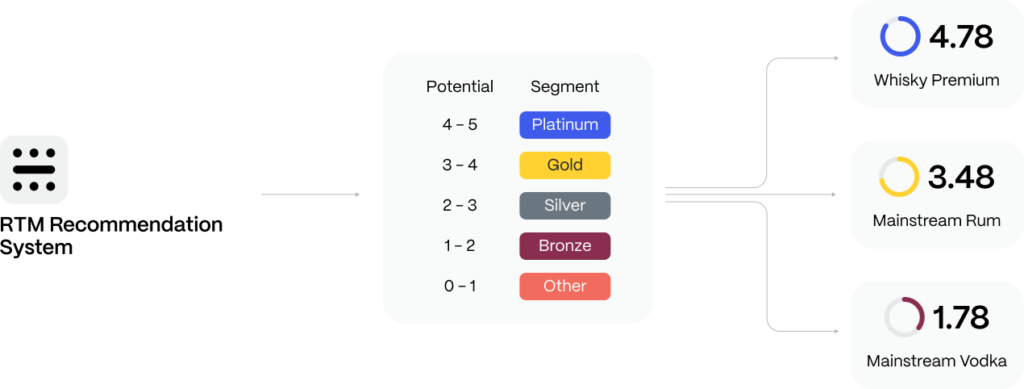Dynamic Segmentation – The Foundation of Route-to-Market Strategy
Optimized Sales and Marketing
Dynamic Segmentation enhances Route-to-Market (RTM) strategies by improving sales resource allocation, distribution efficiency, and targeted marketing efforts.
Data-Driven Customer Classification
Using customer data, sales insights, category share, and geolocation, businesses can create precise segmentation models to improve operations and identify new growth opportunities.
Strategic Flexibility for Market Success
Asseco’s Dynamic Segmentation enables businesses to quickly adapt to market changes, supporting smarter sales strategies and revenue growth.

What is Dynamic Segmentation and Why is it Essential?
- Optimize sales resource allocation
Understanding customers’ potential allows Area Sales Managers and their teams to operate more efficiently within their designated regions. - Enhance distribution management
Prioritizing key locations helps minimize losses and increases market coverage. - Boost trade marketing effectiveness
Campaigns and promotions can target the right customer segments. - Support market expansion
Unserved areas and new sales opportunities becomes easier. - Dynamic Segmentation
Enables companies to respond quickly to market changes, adapting their RTM strategies in real-time.

Smith Store
Decision factors


Dynamic Segmentation utilizes multiple data sources for accurate customer segmentation:
Data
- Customer Data
Information about all customers in the targeted market served by the producer or their business partners, such as distributors, wholesalers, and retail chains. - Product Data
Details regarding all products’ master data are accessible at the market level, including potential product margins where applicable.
Sales
- Own Product Sell-Out
For markets where business partners handle distribution, we use sell-out data, which is data on purchases made by stores in the market. - Own Product Sales (ePoS)
For customers associated with organized brands, we utilize the sales data of proprietary products from the store to the consumer (electronic Point of Sale data). - Share in Category
Analyzing product share of sales in relation to competitors is essential to analyzing own product sales.
Customer Insights
- CRM and SFA Data About Customers
Where available, data regarding relationships and completed activities with customers can enhance the segmentation process. - Public Registries and Social Data
Information drawn from Population Registers and regional financial data. - Information drawn from Population Registers and regional financial data
Analyzing the distance from the point of sale to other points of interest, such as the nearest petrol station, hospital, school, or university.
By integrating these diverse data sources, businesses can comprehensively understand the market, facilitating precise segmentation modeling and targeted strategies.
Sample Segmentation Model Overview

Customer Potential Assessment
Each customer is evaluated and scored based on proprietary sales and market data, facilitating their assignment to the appropriate segment.

Identification of Growth Opportunities
Asseco identifies Significant growth opportunities through Dynamic Segmentation, which provides insights into market share within each category. The potential of each product group is analyzed to aid producers in developing effective sales strategies.

Customer Category/Brand/Product Group Assessment
Each product group (including categories, brands, or other levels of product hierarchy) is scored using proprietary sales and market data, allowing their assignment to the appropriate segment.

How does the process work?

Data Integration
The process begins with integrating the necessary data sources for the segmentation process.

Data Analysis and Model Building
Next, the data is analyzed, and a segmentation model is designed and built to reflect producer needs and market specifics.

DataLab Workshops and Fine-Tuning
The segmentation results are presented in interactive dashboards called the DataLab. These outcomes are discussed with local teams to fine-tune the segmentation model.

Dynamic Segmentation Activation
Customers from the selected market are assigned to appropriate segments that represent the Point of Sale business potential.

Scheduling of Updates
The frequency of updates to the Segmentation is determined based on the producer’s needs to ensure that it consistently reflects fresh results.

Regular Status Updates
Regular workshops with business teams are conducted to validate new requirements or data sources, ensuring that the model continues to provide value to the business.
Get in touch
Uncover the full potential of the Asseco Platform.
"*" indicates required fields